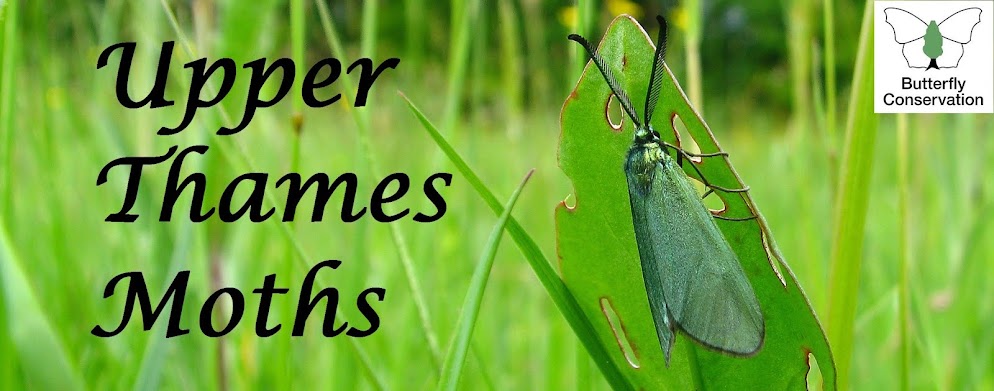Indoors moths in 2020 at home have been limited so far to Nemapogon cloacella and Mompha subbistrigella (two examples of each). Yesterday around lunchtime, my wife found a moth of another species flying in her study.
It's not something I've seen before, and after spending a while perusing the field guide and a few websites, I think its appearance suggests that it is from the Oegoconia genus. Some things support this: the overall pattern, the posture (the wings are held somewhat flat, with only slight "tenting"), and the forewing length is about 5mm, which is just compatible. However, there are substantial difficulties with this identification because the flight period is late June to September and the larval foodplant is decaying leaves.
So I'm stuck and would appreciate some advice. I also note that if it is an Oegoconia spp., then getting it to species level will require gen. det.
Tim Arnold
Newton Longville, Bucks


Hi Tim,
ReplyDeleteThe overall shape says Mompha to me, especially at this time of year when there are so few micro-moths around to choose from (the Oegoconias are summer species). Of the common Momphas which over-winter as adults locally you are likely to see bradleyi, jurassicella (those two need dissection to separate safely), epilobiella or subbistrigella (we don't seem to get divisella in Bucks). I'm afraid the one you have there is another subbistrigella (black thorax with varying amounts of white on the wings in two distinct bands). If you think you might have the rather similar M.sturnipennella (very rare indeed in Bucks, only two records) then it would really need dissection to confirm.
Thanks, Dave. I've had a couple of M. subbistrigella already, but what sent me in the wrong direction this time was that this specimen was holding its wings almost flat when I examined it, which didn't correspond to the pictures on the web, nor of my previous specimens. I've just gone and looked at it again, and of course it's back to normal and tenting its wings much more. It's definitely not M. sturnipennella as there are no white streaks on the costa near the apex. A useful lesson!
ReplyDeleteIf you look on the Moth Dissection website (sorry no hyperlinks in the comment part of the blog - www.mothdissection.co.uk) and type in sturnipennella under Search, Patrick Clement has just uploaded a Mompha sturnipennella image from a moth that appeared in my bathroom on Monday. It went from my house via Steve Whitehouse to Patrick all in an afternoon. Patrick lives in Halesowen. I get them every year inside and out. Note that the apical dashes are quite faint that you talk about in this example. But yours is subbistrigella.
ReplyDelete